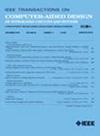iSAFE: Enabling Evenness of Data Freshness in Multipriority Networked Intermittent Systems
IF 2.7
3区 计算机科学
Q2 COMPUTER SCIENCE, HARDWARE & ARCHITECTURE
IEEE Transactions on Computer-Aided Design of Integrated Circuits and Systems
Pub Date : 2024-12-23
DOI:10.1109/TCAD.2024.3522211
引用次数: 0
Abstract
Environmental monitoring applications use energy harvesting to cover wide-range deployment, where devices are powered by ambient energy and operate intermittently when energy is sufficient. In such an intermittent networked system (NIS), a sink node is used to forward the environmental data collected by sensors to a central controller to reflect the physical environment status. Nevertheless, existing data forwarding algorithms for NISs cannot fulfill modern application requirements, where multiple types of data with different timeliness requirements (i.e., multipriorities) are desired to report real-time environmental data for monitoring critical situations. Without considering the multipriorities, we show in this article that it introduces a new problem: unevenness of data freshness. We then propose the sink node-based evenness-aware update forwarding (iSAFE) algorithm to provide evenness among different priorities of data sources in NISs. iSAFE consists of three important components: 1) a theoretical analysis to derive the optimal data forwarding interval between two adjacent status updates from the sensor; 2) an evenness-aware forwarding algorithm to adaptively adjust the forwarding interval based on the runtime status; and 3) a fresh-aware energy preservation algorithm to maintain the freshness of collected data. The experimental results show that iSAFE can achieve up to 682% evenness (94.47% close to the ideal) and 53.3% data freshness compared to the state of the art while being energy-efficient and scalable, suitable for modern applications.iSAFE:在多优先级网络间歇系统中实现数据新鲜度的均匀性
环境监测应用使用能量收集来覆盖大范围部署,其中设备由环境能量供电,并在能量充足时间歇性运行。在这种间歇性网络系统(NIS)中,汇聚节点(sink node)用于将传感器采集的环境数据转发给中央控制器,以反映物理环境的状态。然而,现有的NISs数据转发算法不能满足现代应用需求,即需要多种类型的数据,具有不同的时效性要求(即多优先级),实时报告环境数据,以监测危急情况。在不考虑多优先级的情况下,我们在本文中展示了它引入了一个新问题:数据新鲜度的不均匀性。然后,我们提出了基于汇聚节点的均匀感知更新转发(iSAFE)算法,以提供NISs中不同优先级数据源之间的均匀性。iSAFE包括三个重要组成部分:1)理论分析,从传感器导出两个相邻状态更新之间的最佳数据转发间隔;2)基于运行状态自适应调整转发间隔的均匀感知转发算法;3)基于新鲜度感知的能量保存算法来保持采集数据的新鲜度。实验结果表明,iSAFE可以达到682%的均匀度(接近理想值的94.47%)和53.3%的数据新鲜度,同时具有节能和可扩展性,适合现代应用。
本文章由计算机程序翻译,如有差异,请以英文原文为准。
求助全文
约1分钟内获得全文
求助全文
来源期刊
CiteScore
5.60
自引率
13.80%
发文量
500
审稿时长
7 months
期刊介绍:
The purpose of this Transactions is to publish papers of interest to individuals in the area of computer-aided design of integrated circuits and systems composed of analog, digital, mixed-signal, optical, or microwave components. The aids include methods, models, algorithms, and man-machine interfaces for system-level, physical and logical design including: planning, synthesis, partitioning, modeling, simulation, layout, verification, testing, hardware-software co-design and documentation of integrated circuit and system designs of all complexities. Design tools and techniques for evaluating and designing integrated circuits and systems for metrics such as performance, power, reliability, testability, and security are a focus.

 求助内容:
求助内容: 应助结果提醒方式:
应助结果提醒方式:


